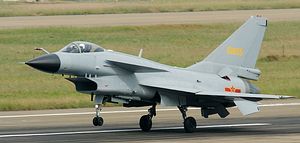How dependent is China on foreign military technology? Despite enormous progress over the past two decades, the answer remains “a lot.” But the reasons for this dependence are complicated, and in any case the situation appears to be changing fast.
Much discussion of the competition between the United States and China concentrates on American vulnerabilities. Analysts have conclusively established that China can threaten critical elements of the U.S. reconnaissance-strike complex, if not yet defeat it outright.
At the same time, however, the overwhelming majority of Chinese technology depends on systems acquired from foreign producers. Liaoning is literally a former Soviet aircraft carrier, and the next Chinese carrier will likely be derivative of that design; the HQ-9 surface-to-air missile system includes tech derived from the Patriot missile systems; Chinese submarines depend on various generations of Soviet technology (along with a few secrets appropriated from the United States). Similarly, Chinese surface vessels use a variety of components copied or derived from Russian or Western European models.
On the aerospace side, the J-10 resembles the Israeli Lavi (and perhaps the F-16), and the J-11, J-15, J-16, and JF-17 are obvious clones or derivatives of old Soviet aircraft. China’s chief long-range bomber, the H-6, is derived from a Soviet bomber that first flew in 1954. And as I discussed two weeks ago, China has likely copied drone technology from the United States and other producers.
Long story short, both the Chinese military and Chinese defense industry depend on Western and Russian technology, perhaps half a generation old. China’s central achievements have been architectural; reconfiguring systems and components to produce more lethal weapons. China’s formidable cruise and ballistic missile arsenals testify to the success of this approach.
The J-20 and J-31 have the opportunity to change that. Notwithstanding evidence that both aircraft depend on acquisition of information from the United States, they each appear to represent significant engineering breakthroughs on the part of the Chinese aviation industry. And they have the potential to catapult Chinese aerospace achievement past the Russians, and to some degree past the Europeans (although the Rafale and Typhoon represent achievements that China has not yet equaled). The J-20 and J-31 will likely both become operational before either the KFX or the F-3 enter service.
But while the Koreans and Japanese have acquired U.S. technology through more… licit means than the Chinese, they’ve still needed foreign help. And this is perhaps the most important lesson; the Chinese national innovation system is hardly unique in needing access to foreign technology. Outside of (perhaps) the United States, every military-industrial complex in the world requires regularly injections of technology available on the international market. Sanctions and export controls prevent China from accessing that market in the same way as South Korea, Japan, India, or any European country. In this context, industrial espionage is not some unique characteristic of the way that the Chinese do business, but rather an entirely normal and predictable reaction to structural constraints that the United States and its allies have imposed.

































